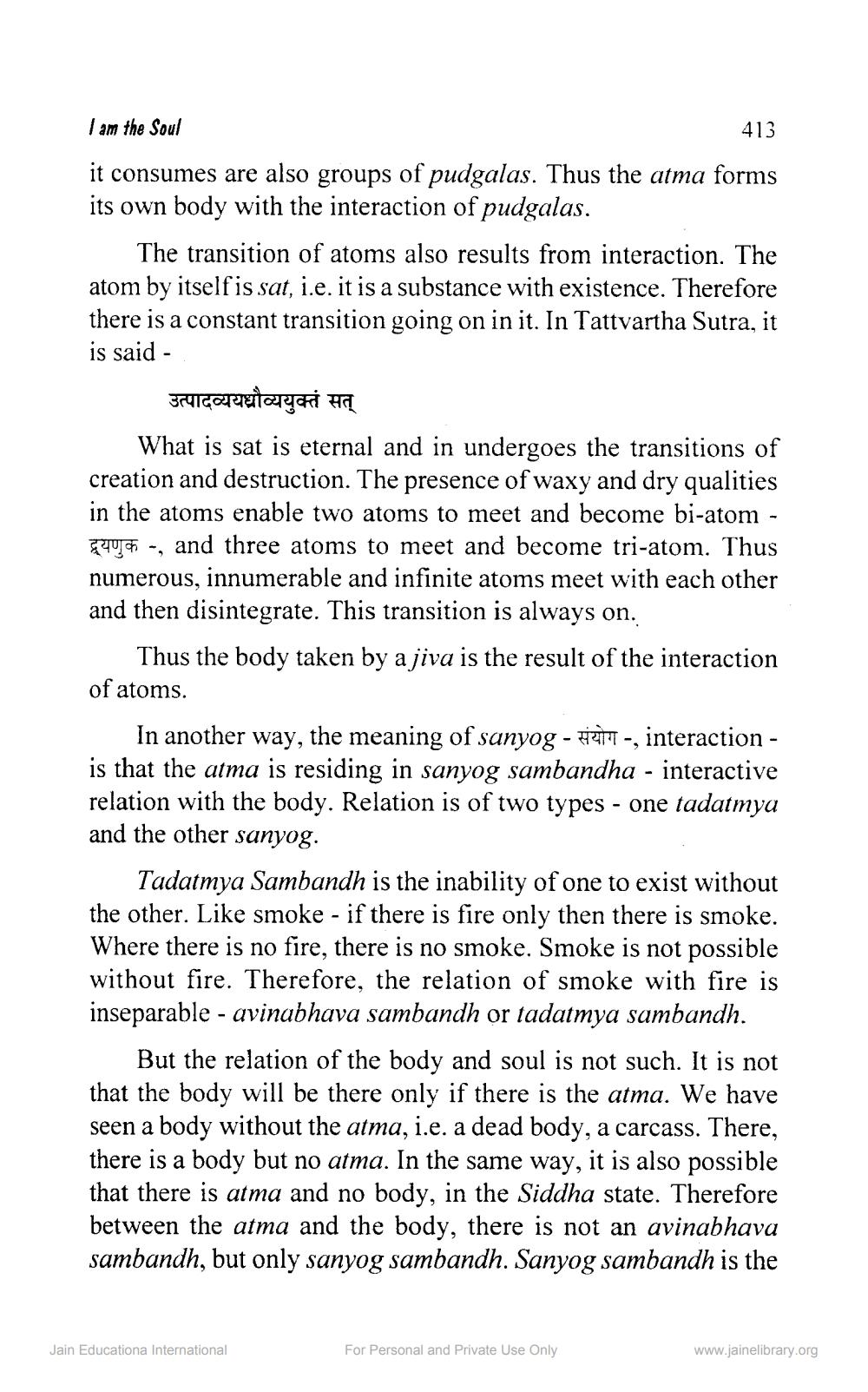________________
I am the Soul
413 it consumes are also groups of pudgalas. Thus the atma forms its own body with the interaction of pudgalas.
The transition of atoms also results from interaction. The atom by itself is sat, i.e. it is a substance with existence. Therefore there is a constant transition going on in it. In Tattvartha Sutra, it is said -
उत्पादव्ययध्रौव्ययुक्तं सत् What is sat is eternal and in undergoes the transitions of creation and destruction. The presence of waxy and dry qualities in the atoms enable two atoms to meet and become bi-atom - auch -, and three atoms to meet and become tri-atom. Thus numerous, innumerable and infinite atoms meet with each other and then disintegrate. This transition is always on.
Thus the body taken by a jiva is the result of the interaction of atoms.
In another way, the meaning of sanyog - #21 -, interaction - is that the atma is residing in sanyog sambandha - interactive relation with the body. Relation is of two types - one tadatmya and the other sanyog.
Tadatmya Sambandh is the inability of one to exist without the other. Like smoke - if there is fire only then there is smoke. Where there is no fire, there is no smoke. Smoke is not possible without fire. Therefore, the relation of smoke with fire is inseparable - avinabhava sambandh or tadatmya sambandh.
But the relation of the body and soul is not such. It is not that the body will be there only if there is the atma. We have seen a body without the atma, i.e. a dead body, a carcass. There, there is a body but no atma. In the same way, it is also possible that there is atma and no body, in the Siddha state. Therefore between the atma and the body, there is not an avinabhava sambandh, but only sanyog sambandh. Sanyog sambandh is the
Jain Educationa International
For Personal and Private Use Only
www.jainelibrary.org




